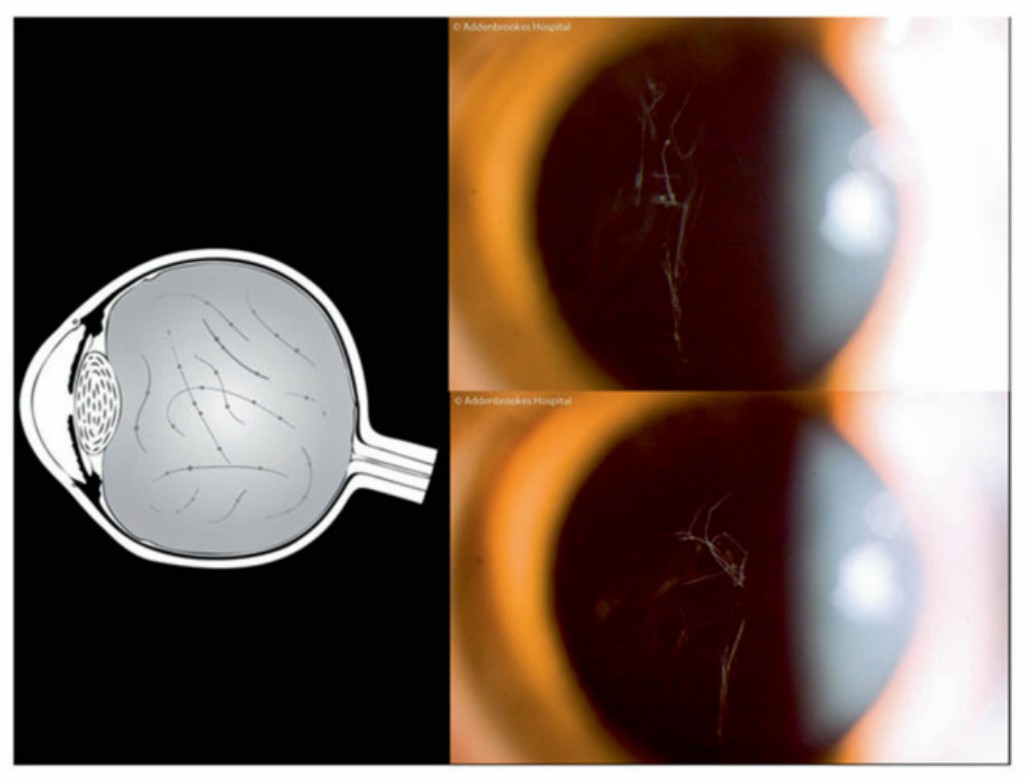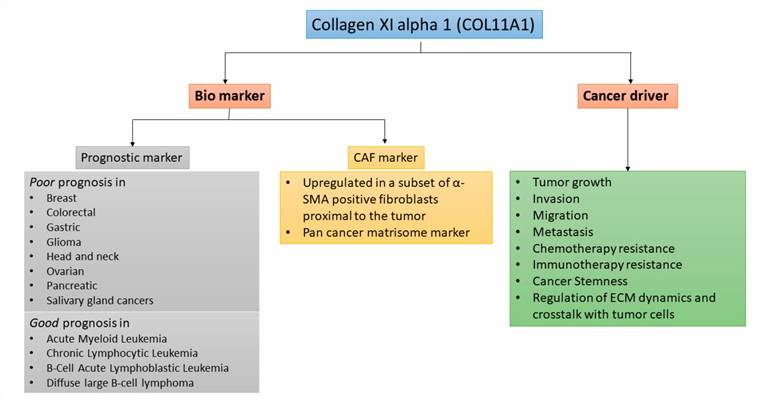COL11A1 and Associated Diseases
Creative Biolabs focuses on providing a comprehensive technology platform and portfolio of services for the research of gene-related diseases. Our experienced scientists are ready to offer first-class assistance to best meet your specific requirements in the field of gene therapy.
The Key Role of COL11A1
Collagen type XI alpha 1 chain (COL11A1) is a member of the fibrillar collagen gene family, which encodes the α1 chain of collagen XI (COL11). The α1 chain combines with the α2 chain (encoded by COL11A2) and the α(1)II chain (encoded by COL2A1) to form COL11. COL11 is mainly found in cartilage and is crucial for the assembly of collagen fibers and bone development. COL11 plays a significant role in regulating the diameter and spacing of type II collagen (COL2) fibers during the formation of collagen fibrils. COL11A1 is involved in maintaining the normal formation of cartilage collagen fibrils and the adhesion properties of cartilage. The normal differentiation and spatial organization of growth plate chondrocytes depend largely on the presence of COL11 in the extracellular matrix of chondrocytes. Mutations in COL11A1 will lead to changes in splicing sites and exon jumping, thereby causing the misassembly of COL11. The collagen in cartilage will form abnormally thick and broken collagen fibers.
COL11A1 is involved in multiple cellular signaling pathways. Transforming growth factor-β1 (TGF-β1) promotes the expression of COL11A1 through nuclear transcription factor Y subunit alpha, while phosphorylated AKT promotes COL11A1 expression through transcription factor c/EBPβ. Gli family zinc finger 1 (Gli1) and transcription factor B-myb also promote COL11A1 transcription. Conversely, fibroblast growth factor 14 (FGF14) and some microRNAs inhibit COL11A1 expression. COL11A1 secreted into the extracellular matrix promotes the Src kinase signaling pathway through integrin α1β1 and discoidin domain receptor tyrosine kinase 2 (DDR2), thereby promoting the expression of matrix metallopeptidase 3 (MMP3) and twist family bHLH transcription factor 1 (Twist1).
Diseases Associated with COL11A1
Stickler syndrome Type II (STL2) is an autosomal dominant connective tissue disorder characterized by high myopia, retinal detachment, craniofacial malformation, early osteoarthritis, and hearing loss. Mutations in COL11A1 lead to the formation of collagen fibers of irregular diameter. The vitreous sheet composed of this abnormal collagen is irregular in size and often thickened, so STL2 patients exhibit a beaded vitreous phenotype. Since COL11 is responsible for regulating the nucleation and transverse growth of collagen fibrils, mutations in COL11A1 may result in a lack of normal collagen fibrils in cartilage, resulting in craniofacial abnormalities seen in STL2 patients. COL11A1 is also present in the fiber layer of the eardrum, so pathogenic variation of COL11A1 may lead to overactivity of the eardrum in patients, resulting in hearing loss.
 Fig.1 Beaded vitreous phenotypes associated with STL2.1
Fig.1 Beaded vitreous phenotypes associated with STL2.1
COL11A1 has been found to be significantly upregulated in many types of cancer. In cancers such as ovarian, breast, pancreatic, and colorectal cancers, high levels of COL11A1 are often associated with aggressive tumor phenotypes and poor prognosis. However, COL11A1 expression has been shown to be associated with better outcomes in hematological malignancies, including acute myeloid leukemia, chronic lymphocytic leukemia, B-cell acute lymphoblastic leukemia, and diffuse large B-cell lymphoma.
 Fig.2 COL11A1 is a biomarker and is a driver of aggressiveness in cancer.1
Fig.2 COL11A1 is a biomarker and is a driver of aggressiveness in cancer.1
Creative Biolabs is committed to providing services related to gene therapy. For more details, please feel free to contact us for further discussion.
References
- Soh, Z.; et al. Dominant Stickler Syndrome. Genes (Basel). 2022, 13(6). Distributed under Open Access license CC BY 4.0, without modification.
- Nallanthighal, S.; et al. Collagen Type XI Alpha 1 (COL11A1): A Novel Biomarker and a Key Player in Cancer. Cancers. Cancers (Basel). 2021, 13(5). Distributed under Open Access license CC BY 4.0, without modification.
